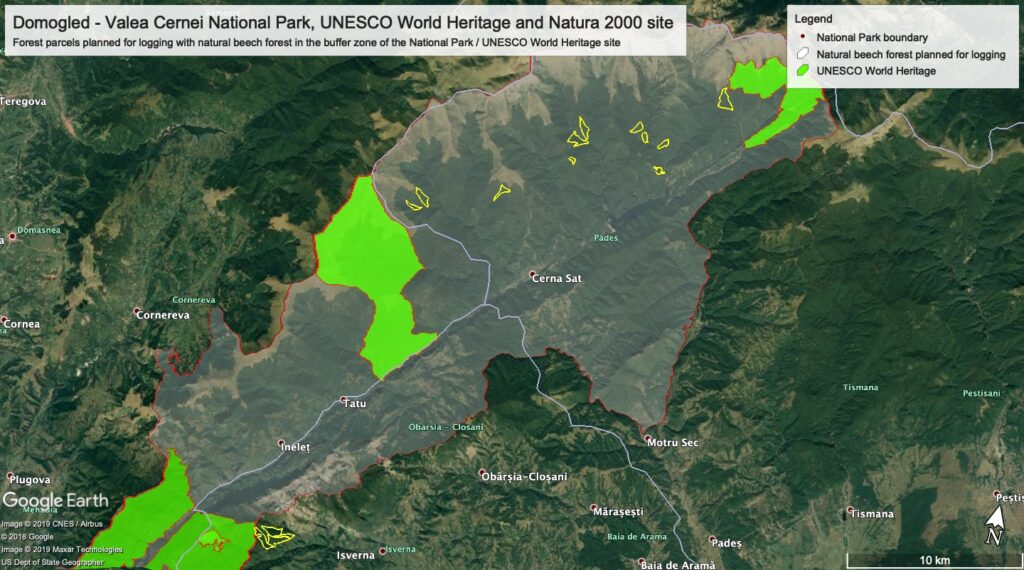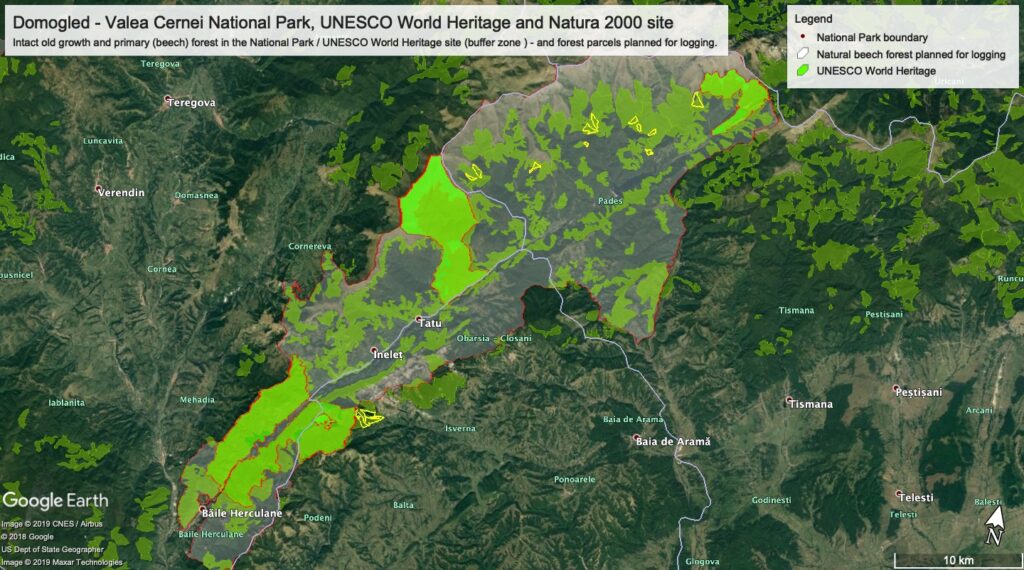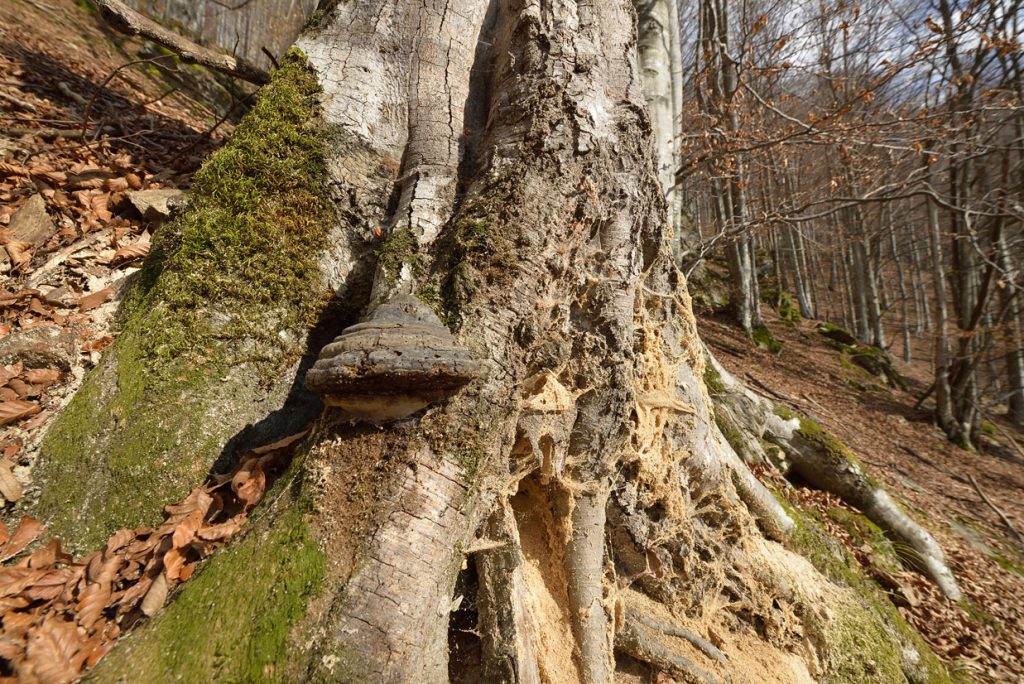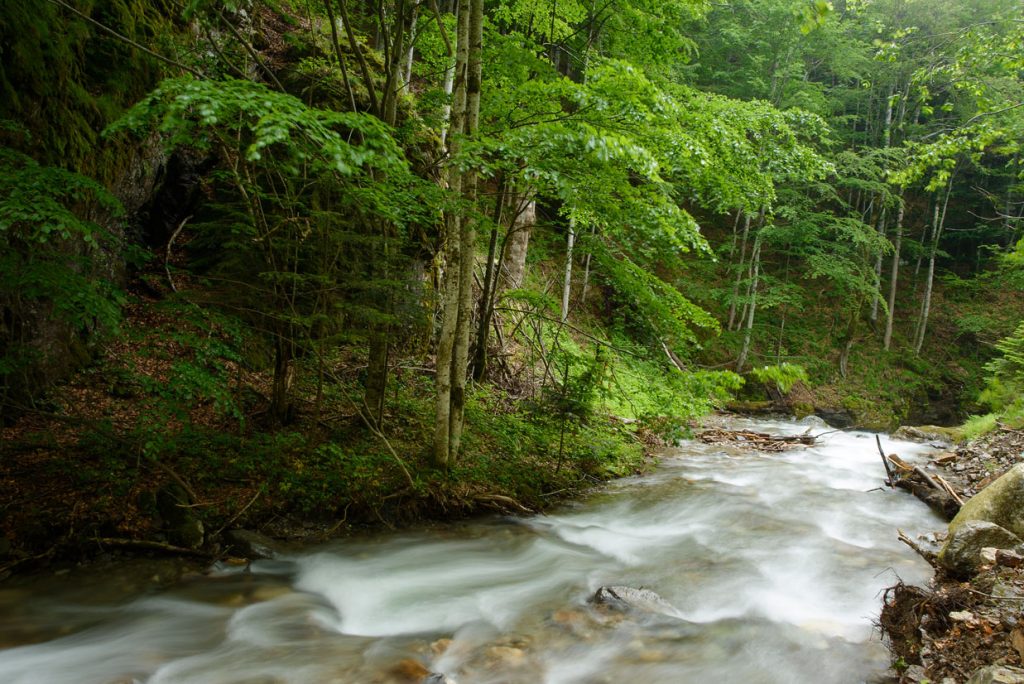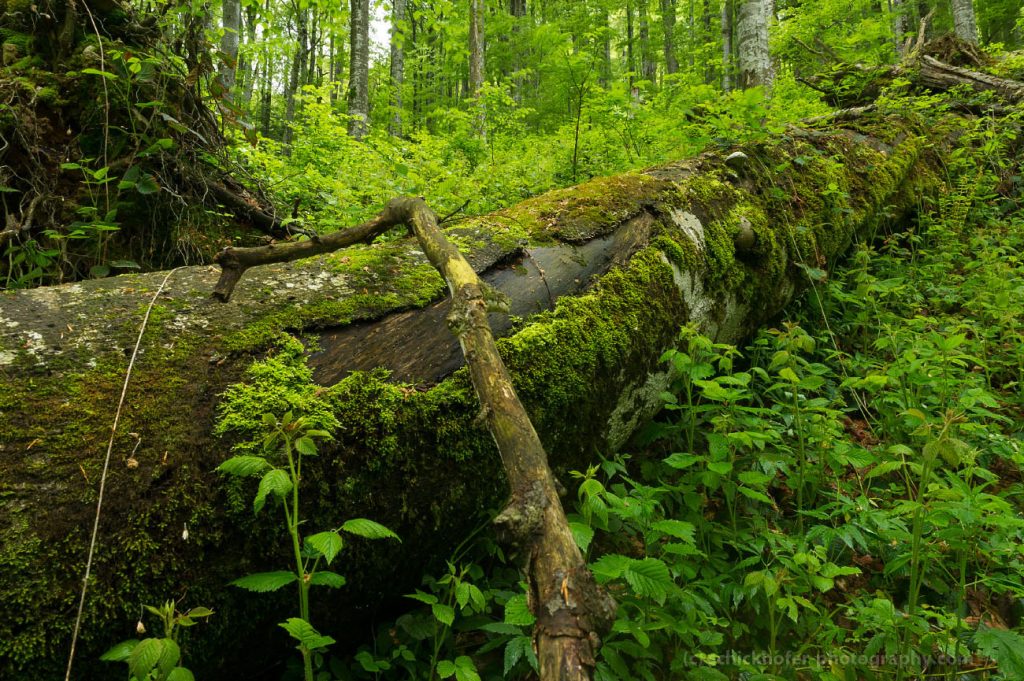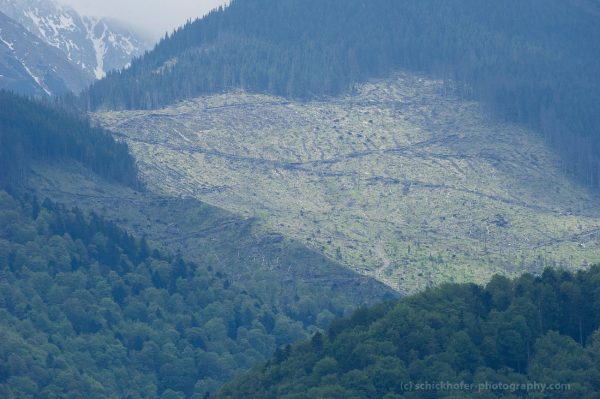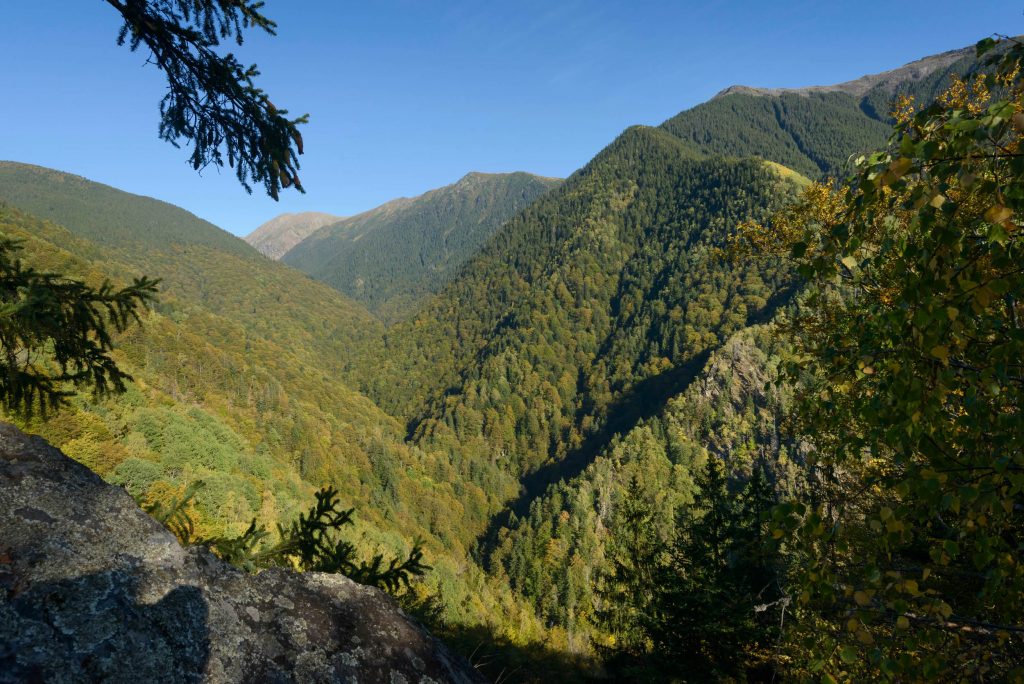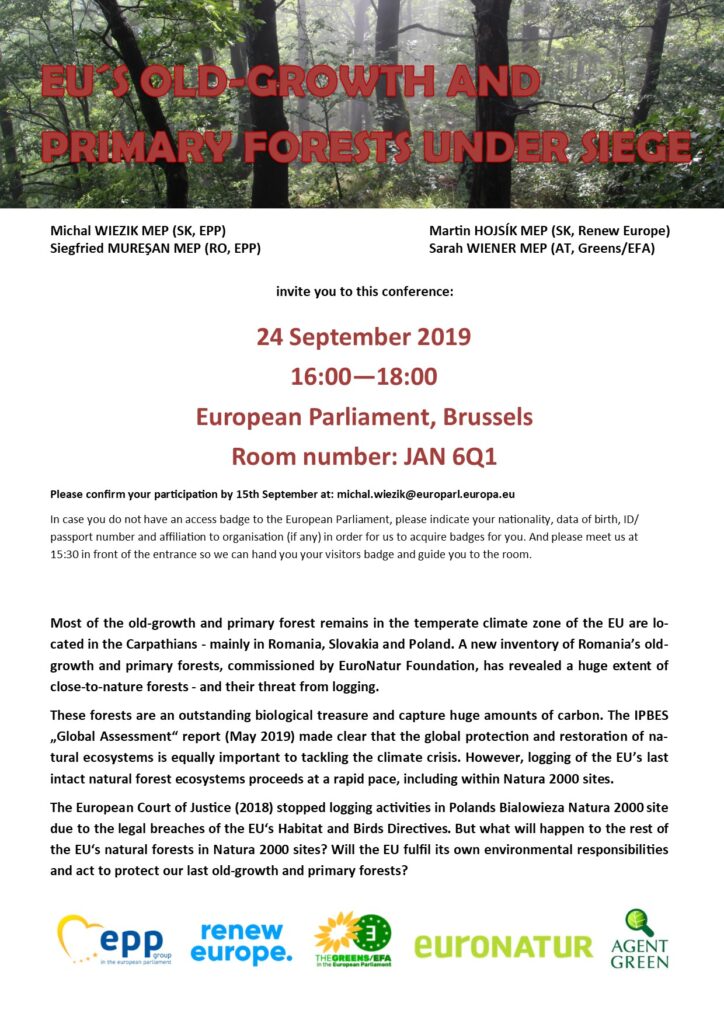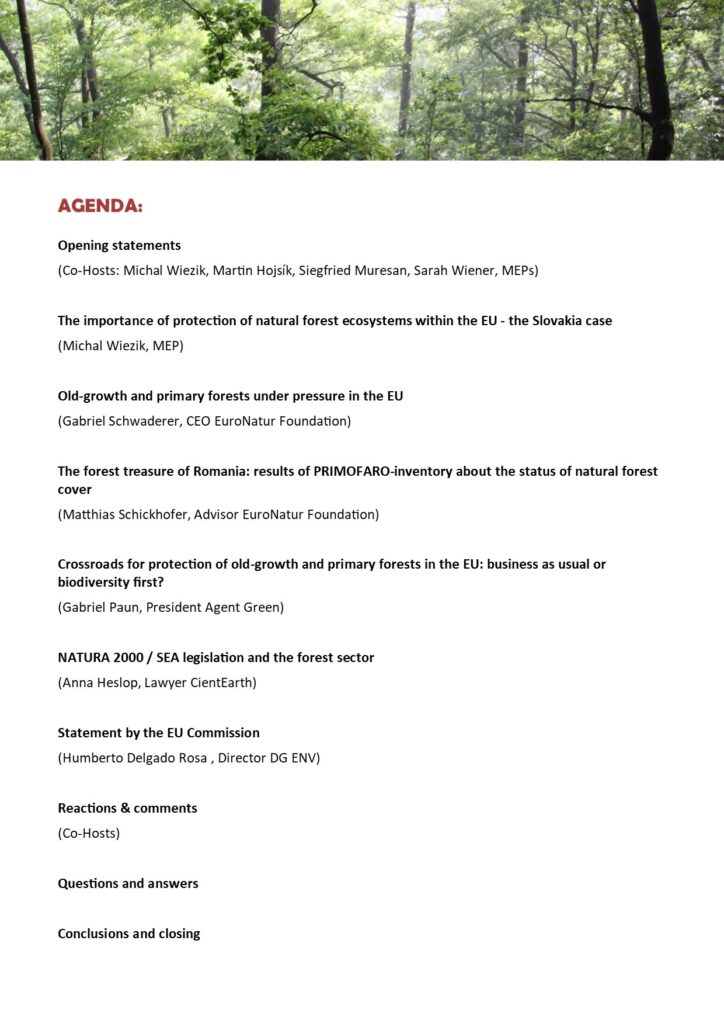Agent Green succeeds to stop Romsilva from cutting down 20 parcels with intact natural beech forest in Domogled – Valea Cernei National Park / UNESCO World Heritage buffer zone and Mehedinti Natural Park
Domogled – Valea Cernei National Park contains very precious nature with „outstanding universal value“. So precious, that some of the park’s primary and old growth beech forests have been inscribed as UNESCO World Natural Heritage site.
Unfortunately, only a fraction of the highly valuable old growth beech forests in Cerna valley is protected from logging yet and has been included in the UNESCO site or in the strictly protected zone of the national park or designated as forest reserve (under the Romanian „Catalogue of Virgin Forests“).
Apparently, State Forestry Romsilva (they control the park management) kept more than 50% of the park’s forests outside the protection zone because of logging interests. Thus, logging proceeds and cuts are moving more and more into the natural beech forests. Centuries old trees fall, not far from the UNESCO World Heritage site, where the same type of forest is under protection, because of its „outstanding universal value“.
In 2018, Romsilva issued logging permits for 20 parcels in some of the parks most precious wild forest landscapes, such as pristine Radoteasa valley in Cernisoara production unit (2B, 25, 27C, 45B, 45C). This gorgeous valley was largely untouched until 2017. Then, a new forest road was brutally dug into its western slopes and logging started.
Five parcels in Mehedinti Nature Park (bordering Domogled Valea Cerni national park to the south) were also planned for logging. A forest road was built there to give access to old growth beech forest on a unique limestone plateau. 10.000 cubic meters (over 6000 beech trees) are planned for cutting only in the first phase of „progressive logging“.
Under Romanian law, „virgin and quasi-virgin forests“ are theoretically under protection and forest authorities must issue logging allowances only if the forests have been degraded already and do not meet (very strict) criteria for identification of „virgin and quasi-virgin“ forests.
Agent Green informed judiciary authorities about the high conservation value forest parcels and urged them to suspend the logging permits in order to allow (field) verification the ecological status of these potential „virgin and quasi-virgin“ forests. If their ecological integrity is confirmed, these forests have to be included in the „Catalogue of Virgin Forests“.
15 of the disputed forest parcels are located in Domogled – Valea Cernei National Park and five in Mehedinti Natural Park. Yesterday (November 12), the judiciary authorities followed the complaint by Agent Green and obliged the Forest Guard of Valcea to verify all parcels and to post them for studies on their webpage, as it is stated in the law (OM 2525/2016).
Catalina Radulescu, the environmental lawyer representing Agent Green in this subject, says: “This is an important success regarding nature conservation and implementation of forest protection legislation in Romania. However, this is not the final decision yet, as the concerned local forest administrations could make an appeal.”
Forest Guard of Valcea: No protection for pure beech forests because they do not have “enough biodiversity”
Furthermore, Agent Green has informed the Forest Guard of Valcea about the existence of large areas of potential „virgin and quasi-virgin“ forests in 708 forest parcels in Domogled – Valea Cernei National Park and in Mehedinti Natural Park.
In the reply to Agent Green the Forest Guard (signed by Mr. Zarnescu) said that they disqualified all 708 parcels, because they have do not show „enough biodiversity“, as they have the „composition of 100% beech trees“.
Beech dominated or pure beech forests are the natural forest types in most of the Domogled – Mehedinti region. The European beech (fagus sylvatica) is endemic in Europe and their protection is the main aim of the transnational UNESCO World Heritage site “Ancient and Primeval Beech Forests of the Carpathians and Other Regions of Europe“, which also includes parts of the old beech forests in Domogled-Valea Cernei National Park.
For Agent Green the statement by the Forest Guard is a „huge abuse“ and strongly indicates a severe lack of qualification of this officer. It is certainly not possible to judge about biodiversity of a forest parcel from an office desk. Old growth and primary forests deserve secure and comprehensive protection, in particular when they are located within a national park, a UNESCO World Heritage buffer zone and a Natura 2000 site, Agent Green argues.
Natural beech forests with old trees are key habitats for numerous theratened and red listed species. World nature conservation organisation IUCN has been expressing strong concern about the decline of dead wood depending species such as saproxylic beetles. These highly specialized creatures need old growth and primary forests with large veteran trees. As these kind of forests are almost extinct in Europe, it is even more important to preserve all intact remains.
Demands by Agent Green and EuroNatur Foundation:
– All logging permits in old-growth and primary forests in national parks and UNESCO World Heritage site buffer zones to be cancelled and logging activities to be stopped immediately;
– All old-growth and primary forests in the national park and UNESCO World Heritage site buffer zones be preserved as designated non-intervention areas (eg. core zones enlarged, UNESCO sites expanded, National Catalogue of Virgin Forests properly implemented). As almost all forests within the UNESCO buffer zones are under the management and ownership of the Romanian state, this should be achievable without the need for financial compensation for private land owners;
– National Parks and UNESCO World Heritage Sites be promoted as places where nature conservation is paramount and adequately funded, world’s best practice management to prioritise the protection, promotion and restoration of natural ecosystems, not the exploitation of natural resources.
